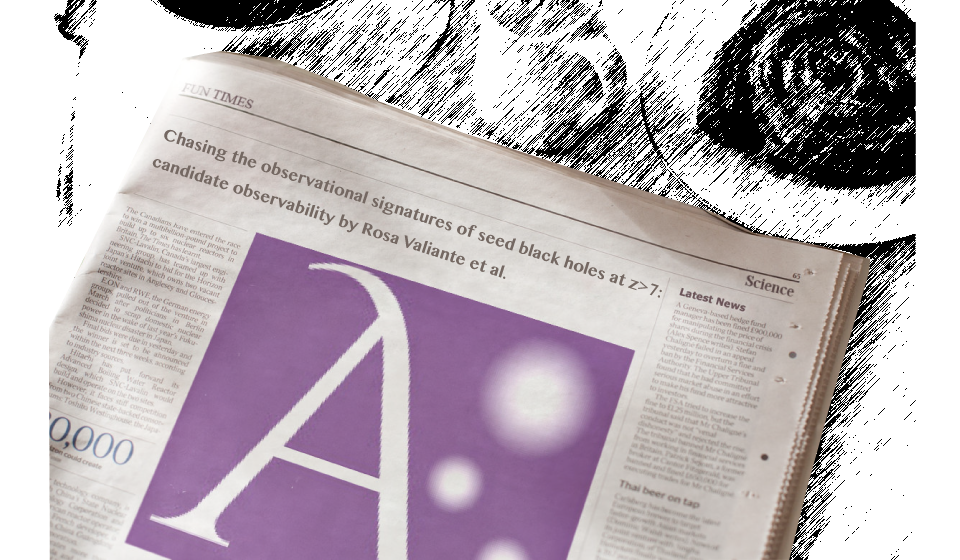
Chasing the observational signatures of seed black holes ...

By R. Valiante
Abstract: "Observing the light emitted by the first accreting black holes (BHs) would dramatically improve our understanding of the formation of quasars at z > 6, possibly unveiling the nature of their supermassive black hole (SMBH) seeds. In previous works we explored the relative role of the two main competing BH seed formation channels, Population III remnants (low-mass seeds) and direct collapse BHs (high-mass seeds), investigating the properties of their host galaxies in a cosmological context. Building on this analysis, we predict here the spectral energy distribution and observational features of low- and high-mass BH seeds selected among the progenitors of a z~6 SMBH. We derive the processed emission from both accreting BHs and stars by using the photo-ionization code Cloudy, accounting for the evolution of metallicity and dust-to-gas mass ratio in the interstellar medium of the host galaxies, as predicted by the cosmological data- constrained model GAMETE/QSOdust. We show how future missions like JWST and ATHENA will be able to detect the light coming from SMBH progenitors already at z~16. We build upon previous complementary studies and propose a method based on the combined analysis of near infrared (NIR) colors, IR excess (IRX) and UV continuum slopes (i.e. color-color and IRX-Beta diagrams) to distinguish growing seed BH host galaxies from starburst-dominated systems in JWST surveys. Sources selected through this criterion would be the best target for follow-up X-ray observations."

